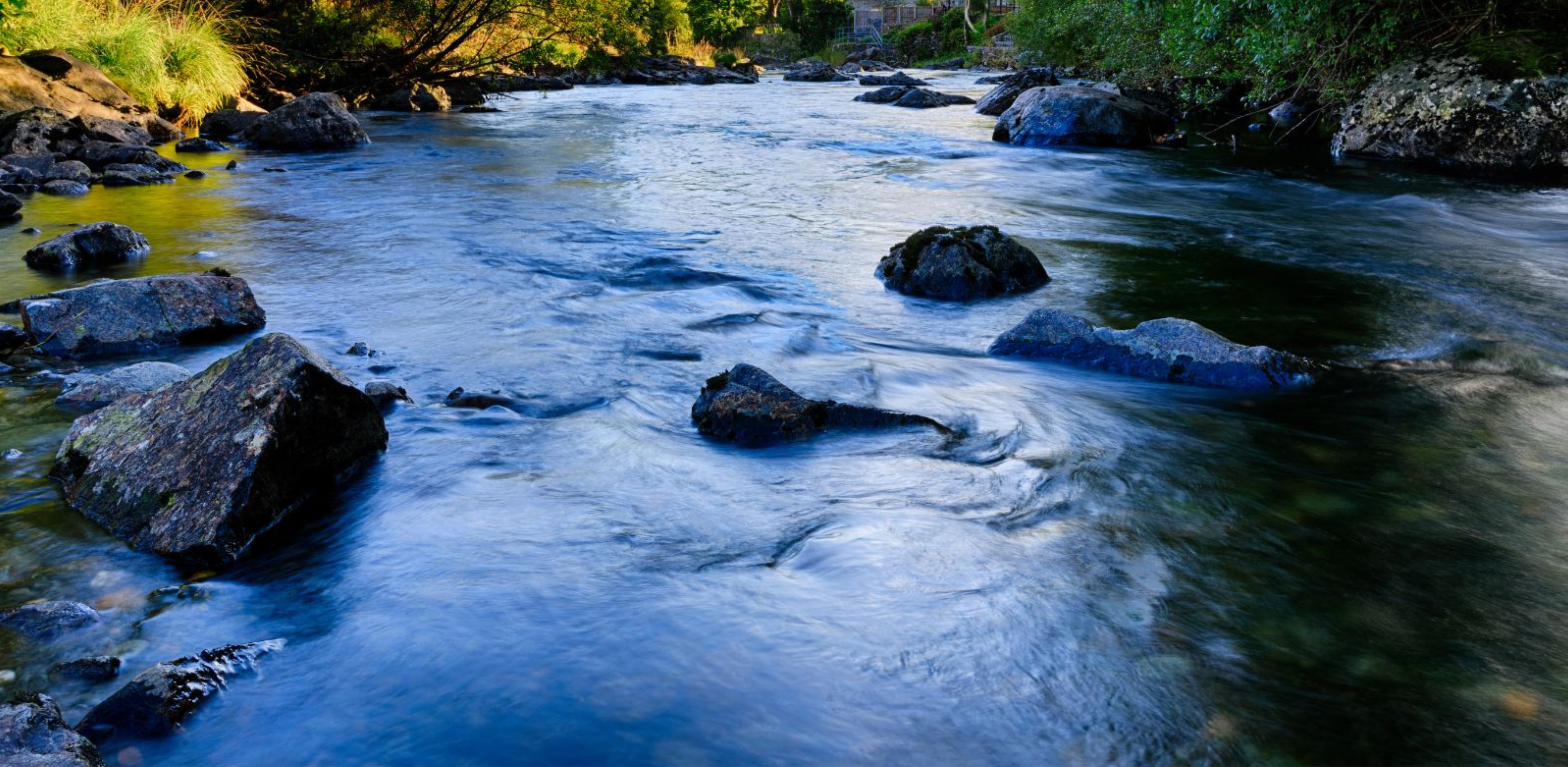Water Companies in Wales: Everything You Wanted to Know About PR24 But Were Afraid to Ask – by Mandy Marsh
Maybe not everything. What even is PR24 anyway?
Every five years Ofwat conducts a Price Review of water companies and the next one is due to be implemented in 2024, hence PR24. Ofwat is a non-ministerial government department established in 1989 when the water and sewerage industry in England and Wales was privatised. Because water companies are effectively monopolies, Ofwat was set up as a regulatory body to oversee water company standards – legal, environmental and social – and ensure that customers get a fair deal and are not penalised by the lack of competition. PR24 sets price controls and standards for water and sewerage companies for 2025-2030.
In response to the PR24 consultation process, Wildlife and Countryside Link (WCL) in England published their manifesto Blueprint for PR24 setting out the approach they would like PR24 to follow. However, water companies in England and Wales operate quite differently; England has nine water companies with shareholders (more than 70% of shares are owned by organisations from overseas), whereas Wales has just two, Dŵr Cymru/Welsh Water (DCWW) and Hafren Dyfrdwy (HD). DCWW is a non-profit-making venture with no shareholders, and manages water supplies and wastewater throughout most of Wales. HD is part of the Severn Trent group and manages the parts of the rivers Dee and Severn catchments which lie in north-east Wales.
Not only that, Welsh Government has enacted two pieces of forward-thinking environmental legislation (the Well-being of Future Generations (WBFG) Act 2015 and the Environment (Wales) Act 2016) which focus attention on achieving ecosystem resilience through maintaining and enhancing biodiversity, and these impose sometimes substantially different (from England) public duties regarding the environment. With that in mind, here at Wales Environment Link we decided to shamelessly plagiarise WCL’s work (just kidding – full cooperation throughout) and make it relevant for Wales in our own Blueprint for Wales.
The PR process is not a simple one but here it is in lightning form:
- Welsh Government tells Ofwat what government policies they expect to see delivered in the PR24 via its Strategic Priorities and Objectives Statement;
- Ofwat produces the PR24 methodology to inform water companies of what they need to do to be responsible and fair to their customers;
- Natural Resources Wales (NRW) is duty-bound (under the WBFG Act) to apply the principles of Sustainable Management of Natural Resources (SMNR);
- Based on Ofwat’s PR24 methodology, NRW works with water companies to produce the National Environment Plan (NEP) which sets out what water companies need to do to meet environmental, legislative and policy requirements;
- Based on the NEP, NRW and water companies identify what priorities will be delivered in the next 5-yearly Asset Management Plan (AMP);
- Water companies promise their customers they will perform at a certain level in accordance with the AMP (2025-2030).
But rather than getting bogged down in further procedural detail of exactly who does what, let’s look at the wider issue.
In the developed world we usually take for granted the luxuries of safe, clean water literally on tap, and the out-of-sight-out-of-mind disposal of our waste. As a society we have a collective memory of the chemical-laden waters of the Industrial Revolution, Victorian slums spreading water-borne cholera, the ‘Great Stink’ of 1858 leading to Bazalgette overhauling London’s sewage system, and we largely still seem to have an optimist’s view that we, society, continue to make ‘progress’ and that things continue to get better. After all, why would anyone choose to go backwards to a worse state?
Sadly this optimism is unfounded. Consider these facts:
- Only 40% of rivers in Wales meet Good Ecological Status and have failed to reach previous targets.
- Salmonid populations are in serious decline in all rivers, and formerly common species such as freshwater pearl mussel, white clawed crayfish and water vole are critically endangered.
- assessment of Welsh SAC (Special Area of Conservation) rivers showed that 61% of 107 waterbodies were failing on phosphate targets.
- There is excessive discharging of raw sewage into waterways, with clear evidence that some discharges are exceeding their legal limits. The risk of bathers contracting illnesses such as E.coli or gastroenteritis was just as high in 2020 as it was in the 1990s.
- Despite Wales’s notorious reputation as a rainy country, we are currently taking out more water than the skies put in. This is predicted to get worse with the double whammy of increased demand and climate change. In Wales, the projected reduction in summer rainfall by 2050 significantly exceeds the projected increase in winter rainfall.
- Not all ‘Welsh water’ is used solely by people in Wales. The UK’s total water supply is forecast to drop by 7% by 2045.
- The two Welsh water companies leak the equivalent of 243 litres per property, per day (2021-22).
WEL’s response to PR24 has therefore concentrated on similar themes to WCL’s Blueprint, but with greater emphasis on duties under Welsh law. England and Wales are so often considered as a single item that it can be difficult finding statistics or baseline measurements which apply solely to Wales. Ofwat needs to do more to take these differences into account, rather than seeing Wales as an ‘added extra’. Given the differences in how Welsh and English water companies operate, how are we to know what is improving and what needs more attention without this baseline data? If data is seriously skewed by being lumped in with England it will be very hard to see if we are reaching Welsh biodiversity targets.
We have laid out our concerns and recommendations under four main headings:
Establishing the ethos
Catchment and Nature-based Solutions (C&NBS) – collaboration with landowners to work at catchment scale. It might sound blindingly obvious, but what happens upstream will eventually affect what happens downstream. Treating river catchments as whole entities will deliver more for society and the environment than traditional approaches where responsibility for land is divided between different landowners and governing authorities. C&NBS will contribute to achieving the water industry’s commitment to reach net zero carbon emissions by 2030.
Ecosystem resilience must be at the forefront of future management. Welsh water companies have already started to develop a multi-capital accounting approach which considers natural (healthy ecosystems) and social (clean water and amenities) benefits alongside more traditional economic accounting. They should be strongly encouraged to embed this into all their decision-making. Establishing clear biodiversity delivery objectives will help to achieve outcomes for species and for our protected nature sites.
Water use
We’re taking too much water from the environment, which poses a significant threat to freshwater habitats and species. Companies should set 10-yearly milestones for reduction, by a combination of stopping leakages and reducing consumption, both domestic and industrial. We encourage the use of smart meters, which help users to understand more about their daily usage. Regulators should ensure that rivers retain enough water to support nature all year round.
Wastewater infrastructure
In recent years there has been increasing awareness of pollution, particularly of sewage in rivers, noted by the increase in the numbers of people taking up wild swimming and paddlesports. Few people, however, are aware that water companies are legally allowed to discharge untreated sewage directly into rivers, though the reasons for this are sound. Known as Combined Storm Overflows (CSOs), these are permitted when heavy rainfall overwhelms the capacity of the wastewater and sewage storage system. At this point, water companies discharge the excess into rivers to avoid any chance of sewage backwashing into our homes and gardens. As the sewage is already diluted by heavy rain, and is quickly dispersed downstream, little harm is done.
Unfortunately, there is increasing evidence that CSOs are discharging even in periods of dry weather, leading to locally polluted water destroying biodiversity and making it unpleasant and definitely not safe for swimming in. It’s not always clear why these CSOs are discharging.
Poor water quality has significant knock-on effects on tourism and recreation, damaging the economy. The economic value of freshwaters for the whole of the UK is estimated to be £39.5 billion. As our experience through Covid-19 has shown us, access to good quality green/blue space is vital for our physical and mental health.
Working with the public
Public perception of how much water we use is wildly inaccurate; a 2020 survey found that 46% of respondents thought they used around 20 litres per day, per household. The real figure is an astounding 142 litres per person (UK 2020-21 data); one third of that is from toilet flushing. That doesn’t include the vast quantity used by agriculture and industry, and remember the earlier figure above? It’s worth repeating – the two Welsh water companies leak the equivalent of 243 litres per property, per day.
In 2016 Dŵr Cymru/Welsh Water produced its first advert highlighting the fact that it is not-for-profit and, by marketing standards, this was highly successful in reaching its target audience and influencing changes of opinion. They have since produced further adverts to encourage the public to use less water and to stop flushing wet wipes, which cause blockages. We welcome this approach and would like to see it carried much further, as getting the public on-side is essential to seeing any real improvements. Water companies need more backing from Welsh Government and industry to stop pollution at source, rather than trying to deal with it later. On the other hand, they have to lead by example. Customers’ interests are evolving and their expectations are growing as they become increasingly concerned about damage to the environment from water use, sewage discharge, and carbon emissions. It will be hard to persuade the public to change its own behaviour unless water companies show willing by stopping illegal CSOs and reducing the rates of leakage.
Members of Wales Environment Link have been meeting with Welsh water companies and Ofwat in recent weeks to press our case for change. We look forward to seeing ambitious new business plans that really deliver for nature from 2025–2030.
 Mandy Marsh, Wales Project Officer at CIEEM
Mandy Marsh, Wales Project Officer at CIEEM
As part of CIEEM’s membership of Wales Environment Link (WEL), Mandy was involved in drafting the Blueprint for Wales manifesto. This blog was first published on the WEL website.
Blog posts on the CIEEM website are the views and opinions of the author(s) credited. They do not necessarily represent the views or position of CIEEM. The CIEEM blog is intended to be a space in which we publish thought-provoking and discussion-stimulating articles. If you’d like to write a blog sharing your own experiences or views, we’d love to hear from you at SophieLowe@cieem.net.
